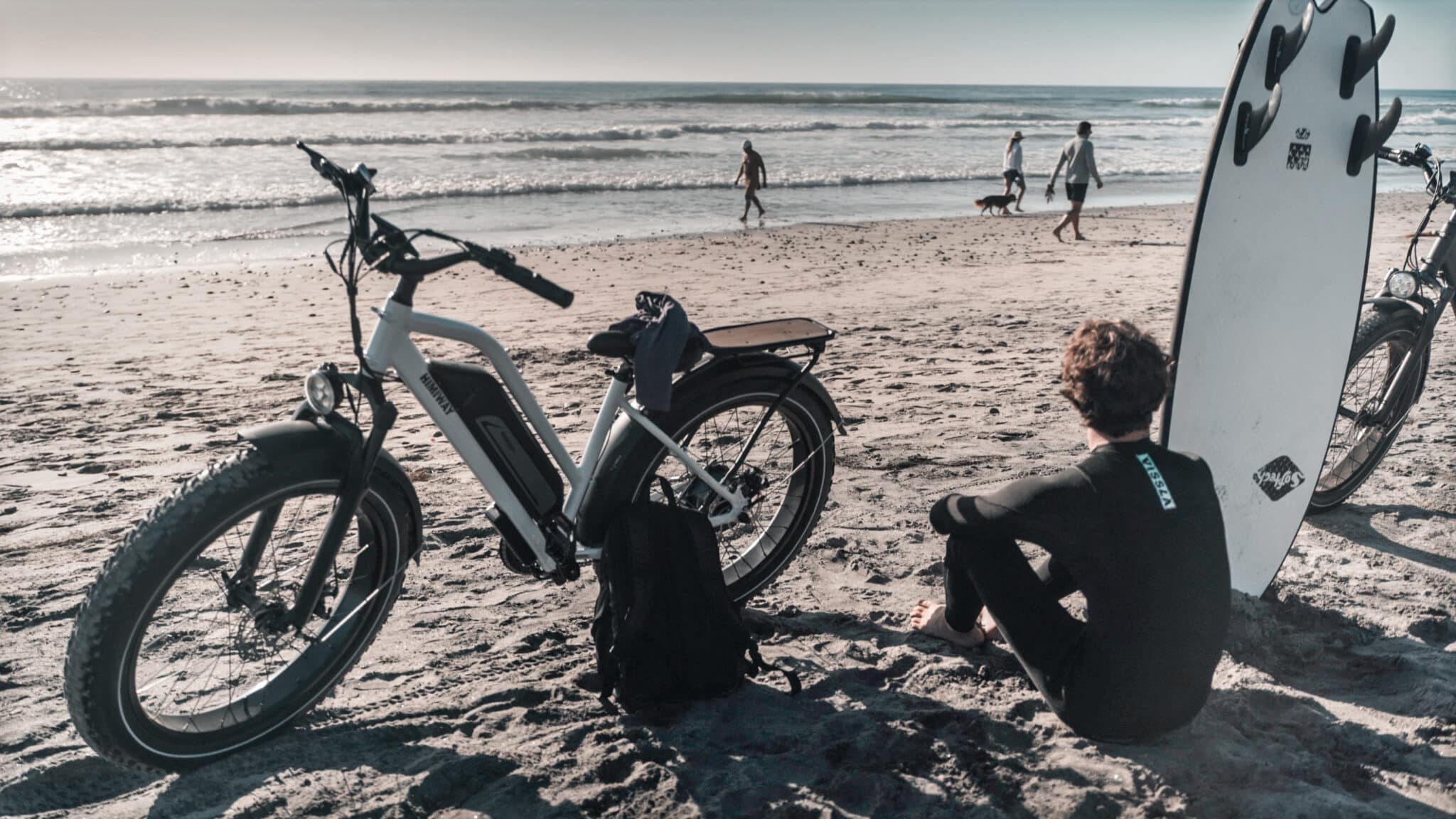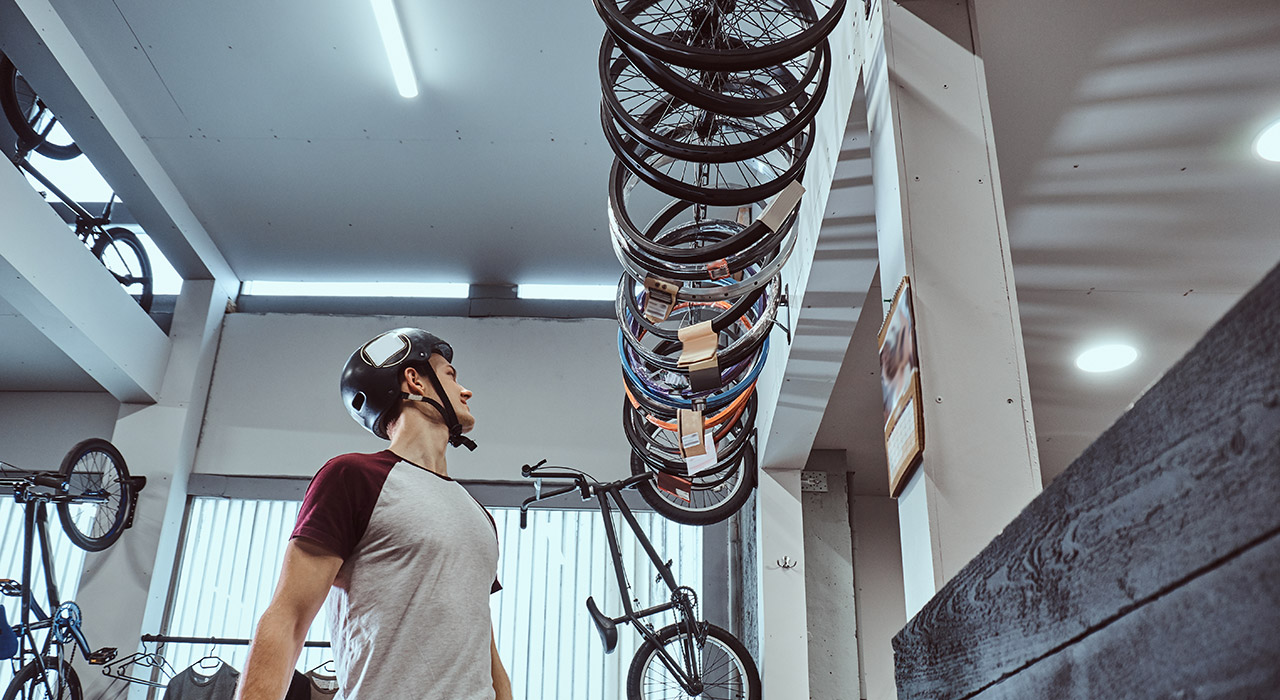
Mastering eBike Tires: A Comprehensive Guide from Pressure to Repairs
Discover the crucial aspects of eBike tires in our comprehensive guide. Your eBike’s tires play a pivotal role in your ride’s performance, safety, and overall experience. We delve deep into selecting the right tires, maintenance, and handling repairs for a seamless adventure.
Table of Contents
Section 1: The Importance of Specialized eBike Tires
When it comes to eBikes, every component plays a vital role in ensuring a safe and enjoyable riding experience. Among these, the tires stand out as a crucial element. You might wonder whether eBikes necessitate a unique set of tires. While local regulations may not mandate specific tires for eBikes, delving into the world of specialized eBike tires reveals why they are often considered an essential upgrade for electric bicycle enthusiasts.
Why Specialized eBike Tires Matter
eBikes, Not Ordinary Bicycles: First and foremost, it’s crucial to recognize that eBikes are not your ordinary bicycles. Unlike traditional bikes, eBikes come equipped with electric motors, battery packs, and increased weight due to these components. This fundamental difference calls for a unique approach to tire design.
Supporting Extra Weight:
Specialized eBike tires are engineered to support the additional weight brought about by batteries and electric systems. Regular bicycle tires, designed for much lighter loads, may not withstand the demands of an eBike’s power and weight.
Handling the Forces:
eBikes can generate higher forces and speeds compared to traditional bicycles, especially when climbing hills or cruising at maximum electric assistance. Specialized eBike tires are constructed to handle these increased forces effectively, ensuring stability and safety during your rides.
Enhanced Durability:
Given the unique demands of eBikes, specialized tires often offer enhanced durability. They are built to withstand the wear and tear associated with electric-assisted riding, resulting in a longer lifespan and reduced maintenance.

Optimized Traction:
Specialized eBike tires are designed to provide optimal traction on various terrains, including asphalt, gravel, sand, and dirt trails. This enhanced grip enhances your control over the bike, making your rides more enjoyable and secure.
In summary, while local regulations may not explicitly require specialized eBike tires, the advantages they offer in terms of safety, durability, and performance make them a valuable investment. As you continue reading, you’ll gain further insights into choosing the right tires for your eBike and how they can significantly enhance your riding experience.
Section 2: Unraveling Speed Ratings for eBike Tires
Understanding the intricacies of eBike tires involves delving into factors like speed ratings. While many eBike tire manufacturers do not prominently display speed ratings, this section will unravel the significance of speed ratings and help you navigate this aspect of tire selection.
Do eBike Tires Have Speed Ratings?
The simple answer is both yes and no. Many eBike tire manufacturers do not assign specific speed ratings to their tires, as they are designed to cater to a broader range of eBike models and riding scenarios. However, some manufacturers do provide speed ratings for their eBike tires.
Interpreting Speed Ratings
When speed ratings are indicated, they provide valuable information about the tire’s intended use and limitations. It’s essential to interpret these ratings correctly to ensure your safety while riding an eBike. Here are some key points to consider:
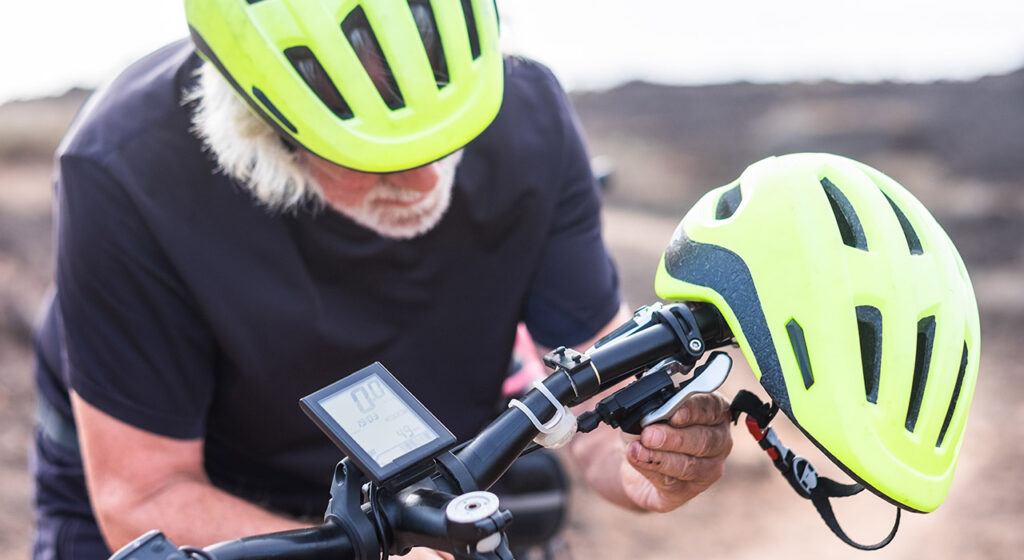
Matching Speeds:
If a manufacturer specifies a speed rating, it’s crucial to ensure that it matches or exceeds the speeds your eBike can achieve. Riding consistently at speeds higher than the tire’s rated speed could lead to safety issues.
Consider Riding Habits:
Your riding habits play a significant role in interpreting speed ratings. If your typical rides involve speeds well within the tire’s rated limits, then a non-rated tire designed for eBikes might suffice. However, if you frequently push the limits, a tire with a specific speed rating becomes more critical.
Safety First:
While some eBike riders may choose tires without speed ratings, prioritizing safety is paramount. Opting for tires designed specifically for eBikes, even without a speed rating, ensures that the tires can handle the unique demands and forces generated by electric-assisted riding.
A Case in Point: Schwalbe Tires
Schwalbe is an example of a reputable eBike tire manufacturer that does not typically include speed ratings on its tires. However, this doesn’t diminish their suitability for eBikes. Schwalbe tires are crafted with the specific requirements of eBikes in mind, including robust construction and reliable performance.
In situations where speed ratings are provided, matching these ratings to your eBike’s capabilities is essential. It becomes especially crucial if your eBike can achieve speeds significantly higher than the rating. Safety should always be the guiding principle when selecting eBike tires.
When it comes to eBike tires, one category that has gained significant attention is the “fat tire.” These oversized, chunky wheels have been a game-changer for many eBike enthusiasts, especially those who crave off-road adventures. In this section, we’ll delve into the fascinating realm of fat tires, their benefits, and where they shine.
Enhanced Traction:
Fat tires, characterized by their wide profile, are designed to maximize traction. This becomes especially important when venturing off the beaten path. Whether you’re tackling muddy trails, sandy dunes, or snowy landscapes, fat tires provide the grip needed to navigate challenging terrains with confidence.
Built for Comfort:
The larger volume of fat tires allows them to act as natural shock absorbers. As a result, riding on rough or uneven surfaces becomes considerably more comfortable. The tires help dampen vibrations and bumps, reducing rider fatigue during extended journeys.
Float Over Obstacles:
Fat tires are adept at “floating” over obstacles. Their larger surface area distributes the rider’s weight more evenly, preventing sinking in soft terrains like sand or snow. This feature opens up exciting possibilities for exploration in environments that would otherwise be challenging to navigate.
While fat tires excel in off-road scenarios, they’re versatile enough for year-round riding. Their adaptability to various conditions, including pavement, means you can enjoy the benefits of fat tires on a wide range of terrains.

Are Fat Tires Harder to Ride?
One common misconception is that fat tires require more effort to ride. While this may hold true for traditional bicycles, eBikes come with the advantage of electric assistance. With pedal assist engaged you may hardly notice the additional effort required to get fat tires rolling. In essence, the electric motor compensates for any perceived drawbacks, making fat tires a fantastic choice for eBike riders. See the best fat tire ebike options for 2023 in Kansas City.
In conclusion, fat tires have transformed the eBike landscape by offering enhanced traction, comfort, and versatility. They’re not only ideal for off-road adventures but also make for a comfortable and enjoyable ride on pavement.
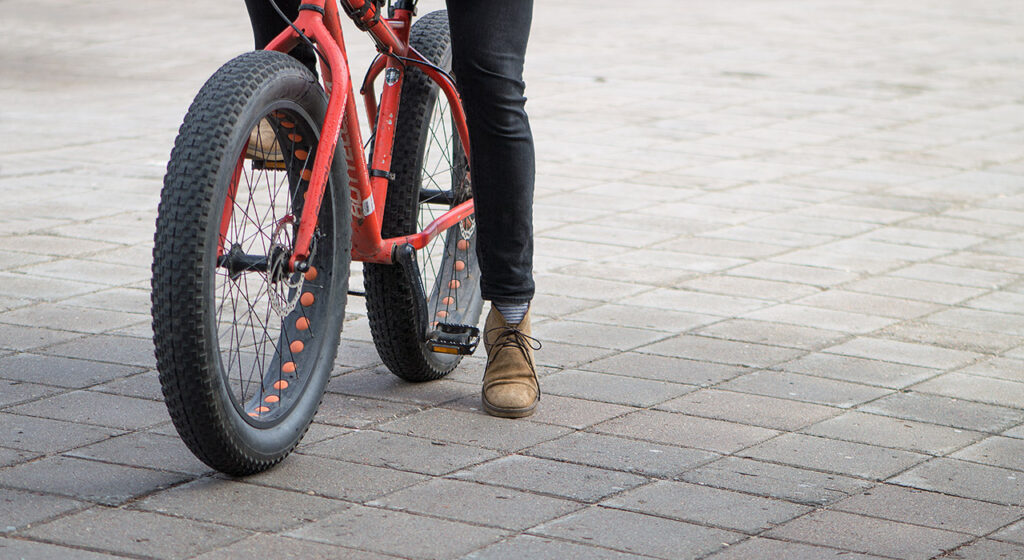
Section 4: Riding Fat Tires on Pavement
Fat tires, with their oversized and rugged appearance, are often associated with off-road adventures and challenging terrains. However, the versatility of these tires extends beyond the wilderness. In this section, we’ll explore the feasibility and advantages of riding fat tires on the pavement, shedding light on why many riders opt for this unique experience.
Embracing Versatility:
One of the remarkable aspects of fat tires is their adaptability to diverse riding scenarios. While they excel in off-road conditions, their performance on pavement is equally impressive. Riders who enjoy both on and off-road cycling find fat tires to be the perfect all-terrain solution.
Enhanced Comfort:
Fat tires offer a more comfortable riding experience on pavement compared to standard narrow tires. Their wider contact patch acts as a natural shock absorber, smoothing out bumps and imperfections on the road. This enhanced comfort can make your urban commutes or leisurely rides a more enjoyable experience.
Maximum Traction:
Fat tires are renowned for their exceptional traction. On pavement, this means increased grip, stability, and control. Whether you encounter wet surfaces, loose gravel, or uneven pavement, fat tires provide the confidence to navigate these conditions with ease.
An Elevated Ride:
The larger size of fat tires contributes to an elevated riding position, providing a commanding view of your surroundings. This elevated perspective enhances safety by improving visibility, allowing you to anticipate obstacles and traffic more effectively.
A Pleasant Journey:
Riding on fat tires, even on pavement, can be a pleasantly unique experience. The combination of comfort, traction, and the distinctive feel of fat tires underlines the joy of cycling, turning each ride into an adventure, no matter the terrain.
Adapting to Your Preferences:
The beauty of fat tires lies in their adaptability. While they shine on rough trails, they do not shy away from the smoother surface of the pavement. If you enjoy the flexibility to switch between terrains without changing your bike’s tires, fat tires offer the ideal solution.
In conclusion, riding fat tires on the pavement is not only feasible but also enjoyable. These versatile tires provide a comfortable, safe, and exciting experience, making them a popular choice among riders who seek adventure both on and off the beaten path. Whether you’re commuting through the city or embarking on a leisurely weekend ride, fat tires can enhance your journey in unexpected ways.
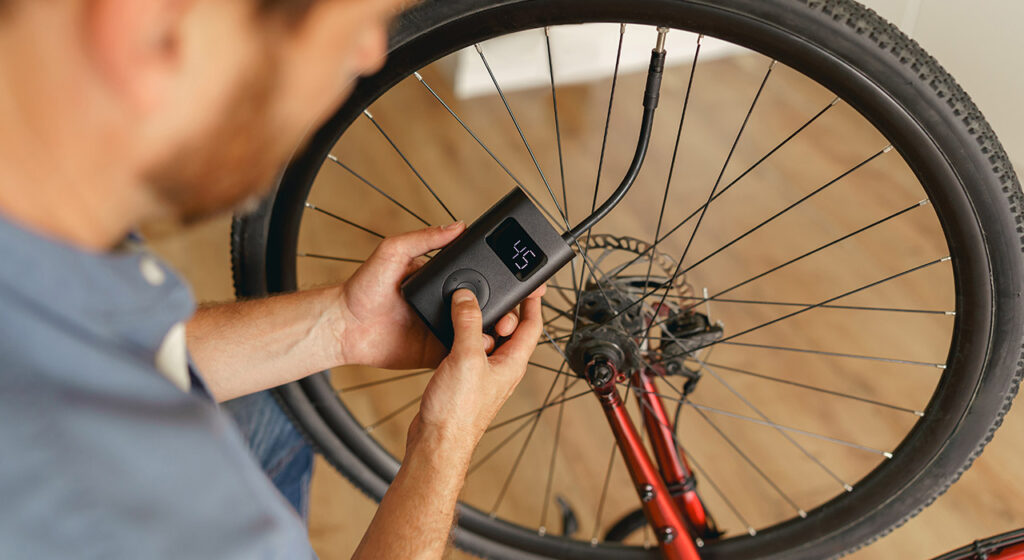
Section 5: Finding Optimal Off-Road Tire Pressure for Your eBike
Off-road adventures on your eBike can be exhilarating, allowing you to explore diverse terrain and discover new horizons. However, one critical aspect of ensuring a smooth and safe off-road ride is finding the optimal tire pressure for your eBike’s specialized tires.
Why Off-Road Tire Pressure Matters
Enhanced Comfort and Traction:
Off-road riding often involves uneven surfaces, such as rocky trails, loose gravel, or muddy paths. The right tire pressure can significantly enhance your comfort by acting as a shock absorber. It allows your specialized eBike’s tires to grip the terrain better, ensuring stability and control.
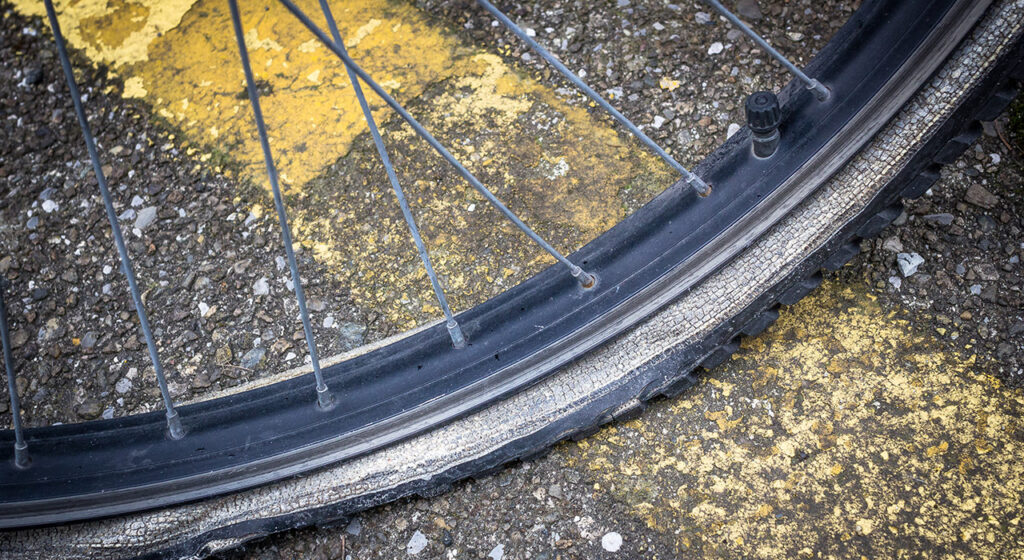
Preventing Flats:
Riding off-road exposes your tires to various hazards, like sharp rocks and thorns. Maintaining the correct tire pressure minimizes the risk of punctures and flats. Lower pressures can lead to pinch flats, where the tube is pinched between the tire and rim, causing leaks.
Balancing Grip and Efficiency:
Off-road tire pressure is a balancing act. Lower pressures provide better traction by allowing the tire to conform to the terrain, increasing grip. However, excessively low pressures can result in sluggishness and an increased likelihood of damage. Higher pressures, on the other hand, improve efficiency but reduce traction.
Finding the Right Pressure Range
The optimal off-road tire pressure can vary depending on several factors:
- Terrain: Consider the type of terrain you’ll be riding on. Rough, rocky trails may require lower pressures for improved grip, while smoother paths might benefit from slightly higher pressures.
- Rider Weight: Your weight influences the amount of pressure required. Heavier riders may need slightly higher pressures to support their weight effectively.
- Tire Size: Different tire sizes and widths may have varying optimal pressure ranges. Refer to your tire manufacturer’s recommendations as a starting point.
- Riding Style: Aggressive riders who take on challenging off-road obstacles may opt for lower pressures, while those cruising on gentler terrain may prefer slightly higher pressures for increased efficiency.
- Trial and Error: Finding the perfect off-road tire pressure often involves some experimentation. Start within the manufacturer’s recommended range and adjust based on your comfort and performance preferences.
Maintaining the Correct Pressure
Remember that off-road conditions can change rapidly. Regularly check your tire pressure before embarking on off-road adventures to ensure it falls within the optimal range. Additionally, invest in a quality tire pressure gauge and a portable pump to make on-the-go adjustments if needed. You can find these gadgets in our locations.
In conclusion, optimizing your eBike’s tire pressure for off-road excursions is essential for a safe, enjoyable, and puncture-free experience. By finding the right balance between comfort, traction, and efficiency, you can confidently explore off-road landscapes with your specialized eBike tires.
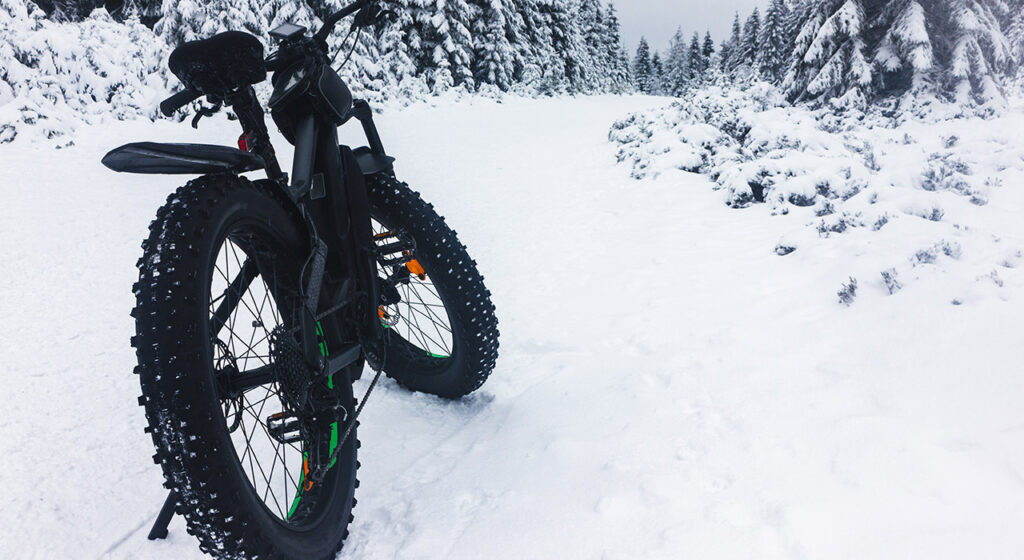
Section 6: Tire Repairs in the Wilderness
Riding through the wilderness on your eBike can be an exhilarating experience, but it also comes with its share of challenges. One of the most common issues faced by riders off the beaten path is a flat tire. While repairing a flat tire in the comfort of your garage might be straightforward, doing so in the wilderness requires a different set of skills and tools. In this section, we’ll explore essential tips for handling eBike tire repairs when you’re far from civilization.
Patching Punctures
Punctures from sharp rocks or debris can happen anywhere, and the wilderness is no exception. If you encounter a reasonably small puncture in your eBike’s tire, patching it is often a viable solution. Here’s how to do it:
Tubeless Tires:
If your eBike is equipped with tubeless tires, patching is relatively simple. You won’t need to dismount the tire. Utilize a tire puncture repair kit to insert the patch and reinflate the tire. Although the repair should hold, it’s advisable to thoroughly inspect and recheck the tire when you return home.
Inner Tubes:
For eBikes with inner tubes, repairing a puncture requires removing the tire. Carry compact tire dismounting/mounting tools in your pack, along with basic hand tools like wrenches. Inner tube punctures can be fixed using patch kits. However, for extreme cases where the damage is too extensive, it’s wise to carry a spare inner tube.

Essential Tools
When venturing into the wilderness on your eBike, it’s vital to be prepared. Ensure you have the following tools on hand for tire repairs:
- Tire Dismounting/Mounting Tools: These compact tools allow you to remove and reattach the tire when fixing inner tube punctures.
- Patch Kits: Carry patch kits suitable for your tire type, whether tubeless or with inner tubes.
- Spare Inner Tube: If your eBike features inner tubes, having a spare inner tube is a valuable backup.
- Wrenches: Basic wrenches can assist in disassembling parts if needed.
- Bicycle Pump: A portable bicycle pump is essential for reinflating the tire after repairs.
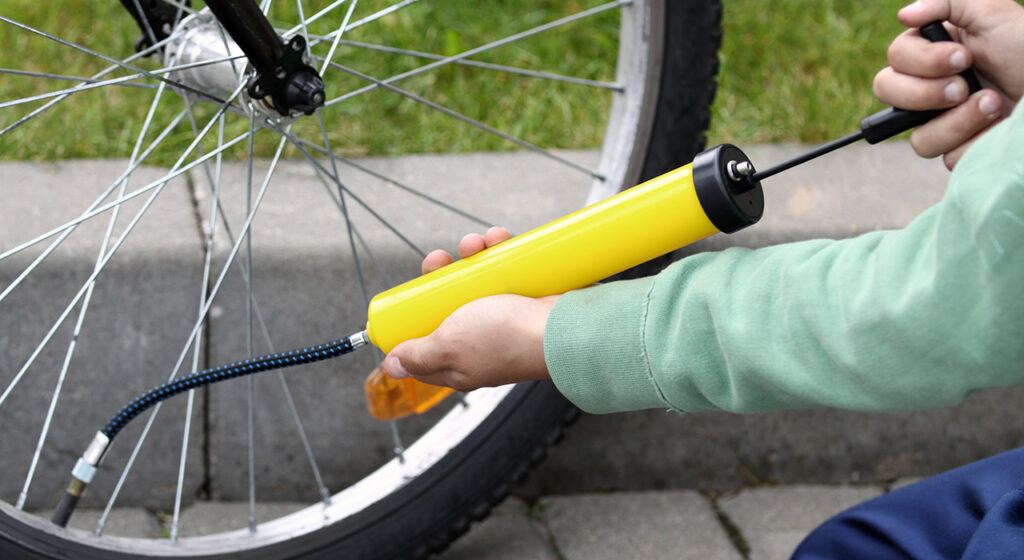
Compact and Lightweight
Select the most compact and lightweight versions of these tools to ensure they won’t burden your journey. They should easily fit into your saddlebags or any storage solutions your eBike offers.
By being prepared and possessing the knowledge of how to handle tire repairs in the wilderness, you can confidently explore the wild terrains on your eBike, knowing you have the means to address unexpected flat tires. Enjoy the adventure and the thrill of riding your eBike in the great outdoors while staying prepared for any contingencies that come your way.
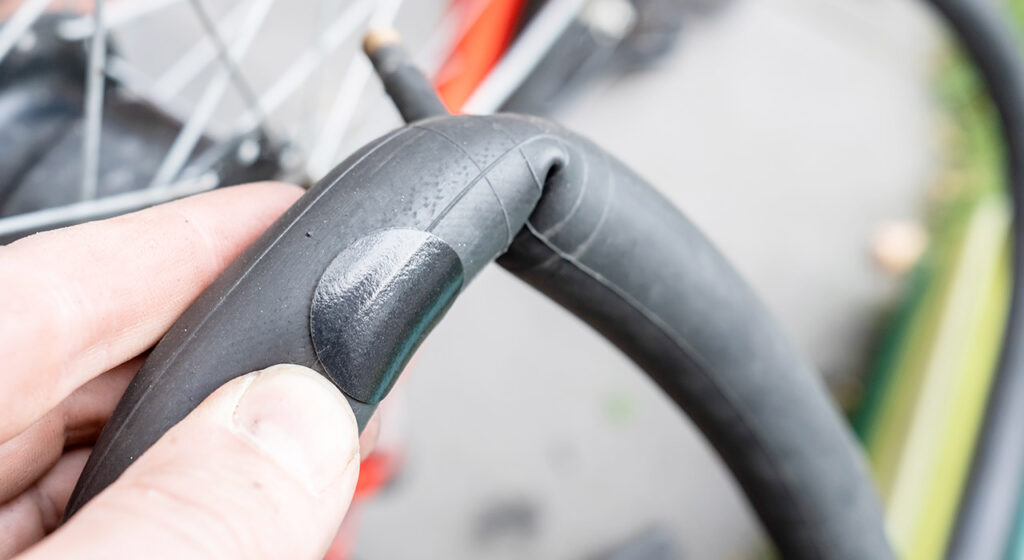
Section 7: Tube or Tubeless? Making the Right Choice for Your eBike
When it comes to eBike tires, one of the decisions you’ll encounter is whether to opt for tubes or go tubeless. Both options have their merits and are suitable for different riding scenarios, making it important to understand the differences and make an informed choice based on your preferences and needs.
Tubes: Tried and True
Traditional inner tubes have been a standard choice for bicycle tires for years, and they are still prevalent among eBike enthusiasts. Here’s what you need to know about them:
- Puncture Repair: Repairing a tube is a straightforward process that most cyclists are familiar with. Small punctures can be patched easily with a repair kit, and you can be back on the road in no time.
- Affordability: Inner tubes are typically more affordable than tubeless setups, making them an attractive option for budget-conscious riders.
- Readily Available: Inner tubes are widely available at bicycle shops and online stores, ensuring you can find replacements with ease.
However, it’s important to note that while tubes are dependable, they are not immune to flats, especially when traversing rugged terrain or encountering sharp objects. Carrying spare tubes and basic repair tools is advisable for longer rides.
Tubeless: The Modern Approach
Tubeless setups have gained popularity in recent years, and many eBike riders are adopting this technology. Here are the key aspects to consider:
- Puncture Resistance: Tubeless tires are less prone to flats because they don’t contain an inner tube. Sealant within the tire can quickly seal small punctures, allowing you to continue riding without interruptions.
- Lower Tire Pressure: Tubeless tires permit lower tire pressures, which can enhance traction, comfort, and control, especially when riding on challenging terrain.
- Reduced Weight: Eliminating inner tubes reduces rotational weight, which can contribute to a smoother and more responsive ride.
- Complex Installation: Converting to a tubeless setup can be more complex than fitting traditional tubes. It may require specific rims, tires, and tubeless valves, and the initial setup may take some time.
- Maintenance: Tubeless tires require periodic checks and the addition of sealant to remain effective. While puncture repair is often easier, ensuring the sealant is fresh is essential.
Ultimately, the choice between tubes and tubeless tires for your eBike comes down to your riding style, terrain, and maintenance preferences. If you prioritize puncture resistance and are willing to invest in a slightly more complex setup, tubeless might be the way to go. On the other hand, if you prefer simplicity and are comfortable with traditional repairs, tubes can serve you well. Whichever option you select, regular maintenance and preparedness for punctures should be part of your eBiking routine, ensuring you can enjoy your rides to the fullest.
Section 8: The Lifespan of eBike Tires
Understanding how long your eBike tires will last is essential for proper maintenance and budgeting. Several factors come into play when determining the lifespan of these critical components, making it important to grasp the nuances of eBike tire durability.
Factors Influencing eBike Tire Longevity
- Rider Weight: The weight of the rider impacts tire wear significantly. Heavier riders put more strain on the tires, potentially leading to quicker wear and tear.
- Terrain: The type of terrain you ride on also affects tire life. Rough, uneven surfaces like off-road trails tend to wear down tires faster than smooth city streets.
- Vehicle Weight: Electric bikes vary in weight, and this too plays a role. Heavier eBikes can cause greater stress on the tires, potentially shortening their lifespan.
- Riding Habits: How you ride matters. Frequent, aggressive acceleration, braking, and sharp turns can accelerate tire wear. Conversely, smooth, controlled riding is gentler on tires.
- Tire Quality: The quality of the tires themselves is a significant factor. High-quality, specialized eBike tires are often more durable and longer lasting than generic bicycle tires.
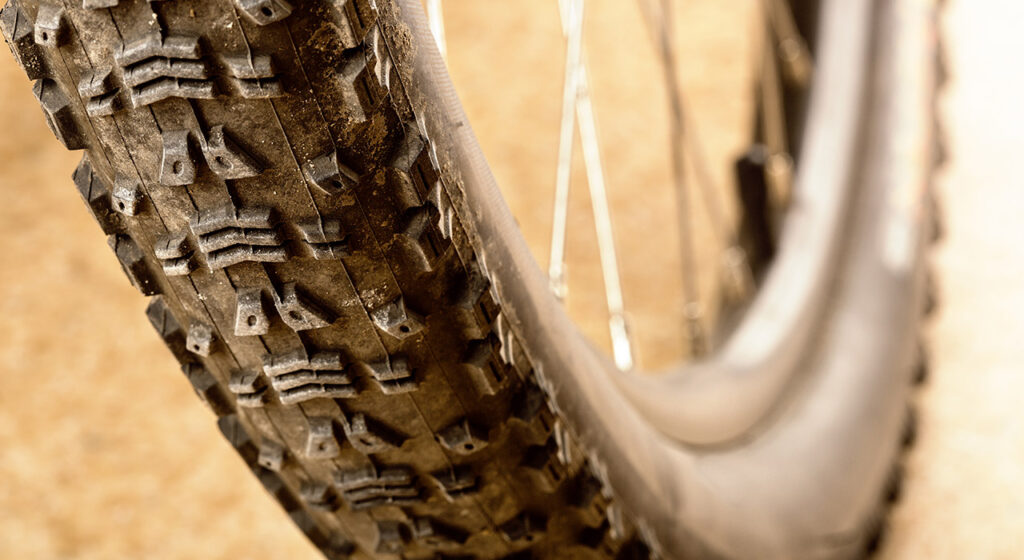
Average Lifespan of eBike Tires
While these factors influence tire longevity, a general estimate can be provided. On average, eBike tires can last anywhere from 1,000 to 3,000 miles. However, this is a rough estimate, and actual mileage may vary widely based on the factors mentioned above.
Maintenance and Prolonging Lifespan
Proper maintenance can help extend the life of your eBike tires. Regularly checking tire pressure, alignment, and inspecting for damage can prevent premature wear. Additionally, riding within the recommended speed limits and avoiding rough terrain when possible, can contribute to tire longevity.
Your eBike’s tires are a critical component that directly impacts your riding experience. Understanding the factors influencing their lifespan and practicing good maintenance habits can help you make the most of your eBike’s tires. With proper care, you can enjoy many miles of safe and enjoyable riding on your electric bicycle.
Section 9: Personalized eBike Tire Knowledge
By this point, you’ve embarked on a journey through the world of eBike tires, learning about their importance, types, maintenance, and more. Now, it’s time to personalize your electric bike tire knowledge to make informed decisions tailored to your specific riding needs.
Matching Tires to Your Riding Style:
One of the key takeaways from our exploration is that eBike tires come in various types, each suited to different riding styles and terrains. Whether you’re a city commuter, a trailblazer, or an off-road adventurer, there’s a perfect tire for you. Consider the surfaces you’ll encounter most and choose your tires accordingly.
Understanding Tire Pressure:
Proper tire pressure is crucial for eBike performance and safety. It affects everything from traction to rolling resistance. Refer to your eBike’s manual or the tire manufacturer’s recommendations for the ideal pressure range. Adjusting the tire pressure to suit your terrain and weight can significantly impact your riding experience.
Maintenance Know-How:
You’ve learned that eBike tire maintenance isn’t complicated but essential. Regularly inspect your tires for wear, cuts, or punctures. Keep your tires at the recommended pressure and address any issues promptly. If you’re a DIY enthusiast, consider carrying a patch kit for quick on-the-go fixes.
The Inner Tube Factor:
Some eBike tires come with inner tubes, while others are tubeless. Understanding your tire’s construction can be vital in the case of a flat tire. Tubeless tires often allow for easier, on-trail repairs. Carrying a spare tube or patch kit if your tires have inner tubes can save you from being stranded.
Balancing Act:
Electric bikes typically don’t require tire balancing unless you’re pushing speeds exceeding 55 miles per hour. Given that most eBikes for various purposes, including hunting, maintain lower speeds, you can rest assured that your tires are naturally balanced.
Customizing for Comfort:
Your eBike is more than just a mode of transportation; it’s an extension of your preferences and style. You have the flexibility to customize your eBike’s tires to enhance your comfort and performance. Experiment with different tire sizes, treads, and pressures to find the perfect setup for your unique needs.
Monitoring Tire Wear:
Keep a close eye on your tire’s condition, as wear and tear are natural consequences of riding. Recognizing when it’s time to replace your tires ensures your eBike remains safe and efficient. Regular inspections before and after rides can help you identify any issues early.
Congratulations, you’ve now completed your comprehensive journey into the world of eBike tires. Armed with this knowledge, you’re better equipped to choose, maintain, and optimize your eBike tires. Remember, tires are not just round rubber; they are your connection to the road or trail, impacting your safety and riding pleasure. Ride on with confidence, knowing that you’ve mastered the essentials of eBike tire knowledge. Happy and safe riding!
Our Best Fat-tire Electric Bikes for 2023
Selected by electricbikereport.com:
- Best Long Range Electric Fat Bike: Himiway Cruiser
- Best All-Terrain Electric Fat Bike: Himiway Cobra
Himiway Electric Bikes: The Ultimate Guide
Himiway Electric Bikes: The Ultimate Guide Himiway is a popular brand of electric bikes that…


